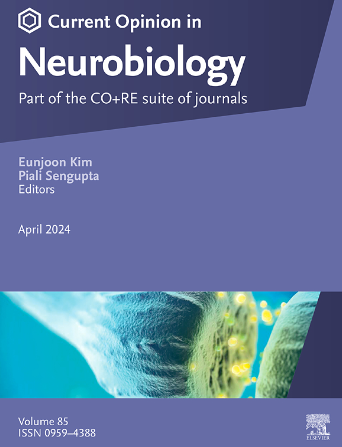肠道中的交感神经元:代谢和免疫健康与疾病的观点
IF 5.2
2区 医学
Q1 NEUROSCIENCES
引用次数: 0
摘要
综述目的:交感神经系统(SNS)通过复杂的神经回路连接大脑和外周器官,是调节全身稳态的重要神经系统。肠道通常被称为“第二大脑”,它对交感神经作出反应,协调消化运动、营养吸收和免疫监视等生理过程,揭示了基本的和潜在的转化意义。因此,及时探索交感肠的沟通是至关重要的。最新发现:以往的研究表明,交感神经信号抑制肠道蠕动和血液流动,同时促进营养物质的吸收。新出现的证据进一步确定了神经代谢轴,其中交感神经活动抑制肠内分泌激素分泌,从而将全身能量平衡与中枢神经系统功能联系起来。此外,双向sns免疫相互作用已被发现;这些途径控制着抗菌防御,但矛盾的是,它们加剧了炎症性肠病(IBD)、肠易激综合征(IBS)和结直肠癌(CRC)。摘要:本文简要总结了交感神经-肠道投射的解剖学见解,强调了它们在代谢稳态和免疫调节中的双重作用,并探讨了针对肠道相关疾病的交感神经通路的治疗机会。本文章由计算机程序翻译,如有差异,请以英文原文为准。
The sympathetic neurons in the gut: Perspectives on metabolic and immune health and diseases
Purpose of review: The sympathetic nervous system (SNS), a crucial regulator of systemic homeostasis, connects the brain and peripheral organs through complex neural circuits. Often termed the “second brain,” the gut responds to sympathetic innervation to coordinate physiological processes such as digestive motility, nutrient absorption, and immune surveillance, unveiling fundamental and potentially translational significance. Therefore, timely exploration of sympathetic-gut communication is essential. Recent findings: Previous studies have revealed that sympathetic signaling inhibits intestinal peristalsis and blood flow while enhancing nutrient assimilation during feeding. Emerging evidence further identifies a neuro-metabolic axis in which sympathetic activity suppresses enteroendocrine hormone secretion, thereby linking systemic energy balance to central nervous system function. Additionally, bidirectional SNS-immune interactions have been uncovered; these pathways govern antimicrobial defense yet paradoxically exacerbate inflammatory bowel disease (IBD), irritable bowel syndrome (IBS), and colorectal cancer (CRC). Summary: This review briefly summarizes anatomical insights into sympathetic-gut projections, highlights their dual roles in metabolic homeostasis and immune modulation, and explores therapeutic opportunities targeting sympathetic pathways for gut-related disorders.
求助全文
通过发布文献求助,成功后即可免费获取论文全文。
去求助
来源期刊

Current Opinion in Neurobiology
医学-神经科学
CiteScore
11.10
自引率
1.80%
发文量
130
审稿时长
4-8 weeks
期刊介绍:
Current Opinion in Neurobiology publishes short annotated reviews by leading experts on recent developments in the field of neurobiology. These experts write short reviews describing recent discoveries in this field (in the past 2-5 years), as well as highlighting select individual papers of particular significance.
The journal is thus an important resource allowing researchers and educators to quickly gain an overview and rich understanding of complex and current issues in the field of Neurobiology. The journal takes a unique and valuable approach in focusing each special issue around a topic of scientific and/or societal interest, and then bringing together leading international experts studying that topic, embracing diverse methodologies and perspectives.
Journal Content: The journal consists of 6 issues per year, covering 8 recurring topics every other year in the following categories:
-Neurobiology of Disease-
Neurobiology of Behavior-
Cellular Neuroscience-
Systems Neuroscience-
Developmental Neuroscience-
Neurobiology of Learning and Plasticity-
Molecular Neuroscience-
Computational Neuroscience
 求助内容:
求助内容: 应助结果提醒方式:
应助结果提醒方式:


